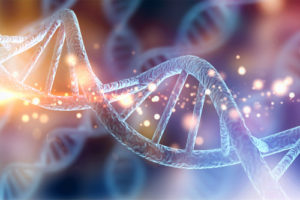Legally Reviewed By:
Brian P. Gabriel, Esquire
 After making its first courtroom debut in the 1980s, DNA evidence quickly became a vital component in thousands of cases across the country. Generally considered extremely reliable by attorneys and juries alike, DNA evidence is also susceptible to crucial faults that could make or break a case.
After making its first courtroom debut in the 1980s, DNA evidence quickly became a vital component in thousands of cases across the country. Generally considered extremely reliable by attorneys and juries alike, DNA evidence is also susceptible to crucial faults that could make or break a case.
If you are suspected of committing a criminal offense and the prosecution has DNA evidence, you may think your case is not even worth fighting. However, an experienced criminal defense attorney knows DNA evidence is not infallible. With over 30 years of experience, Criminal Defense Attorney Brian Gabriel understands what to call into question as far as the legitimacy of DNA evidence in criminal cases.
4 Mistakes That Could Call DNA Evidence into Question
Like any evidence, DNA evidence is vulnerable to errors and mishandling. A few of the most common mistakes made with DNA evidence include the following:
- Person-to-person transfer: For instance, in California, paramedics transported a car accident victim to a local hospital before reporting to a call involving a murder. Paramedics showed up at the scene of the murder without washing their hands between the two calls, unknowingly transferring the car accident victim’s DNA onto the murder victim.
- Mishandling: If the police do not follow proper protocol for handling and storing DNA evidence, it may not be reliable. For example, in Netflix’s “How to Make a Murderer,” police officers discovered DNA connecting the defendant to the scene of a murder. Still, they could not guarantee that they had obeyed all evidence handling procedures. The defense ended up suggesting that the evidence had been tampered with and that the suspect’s DNA was planted at the murder scene.
- Timing: In situations where the suspect and the victim had an ongoing relationship, DNA could be from days before the crime occurred, making it a challenge to establish exactly when the biological material may have been left.
- Contamination: If a significant amount of time elapsed between when a crime was committed to when police discovered the biological material, the material is more likely to have been contaminated.
Any mistakes made with DNA evidence could be the difference between acquittal and a criminal sentence.
Should DNA Always Be Relied On in Florida Criminal Cases?
DNA evidence may go down in history as one the most powerful tools in the criminal justice system, but that does not mean it is foolproof. Similar to fingerprints, DNA in skin cells, blood, saliva, and other biological material is like a personal signature, tracing the material back to ourselves. When you consider that humans shed roughly thirty to forty thousand skin cells every hour, it is easy to see how a bio-trail left at the scene of a crime can lead to the misidentification of the perpetrator.
Because skin cells can transfer and implant themselves onto objects (known as Touch DNA), one person can shake hands with another person who then touches an object, depositing the skin cells of the first person onto said object. This type of transmission could be why an innocent person’s DNA can be found on an object they never touched or in a location to which they have never been.
Fight DNA Evidence in a Criminal Case with an Experienced Florida Attorney
Criminal Defense Attorney Brian Gabriel has over 30 years of experience defending those accused of misdemeanor and felony offenses in Florida. When you choose to work with Mr. Gabriel, he will defend your rights using all the knowledge and skill developed over the span of his career.
Start with a free consultation today by calling Criminal Defense Attorney Brian Gabriel of The Law Office of Gabriel & Gabriel at (561) 475-5952. You can also complete an online contact form to learn more.



